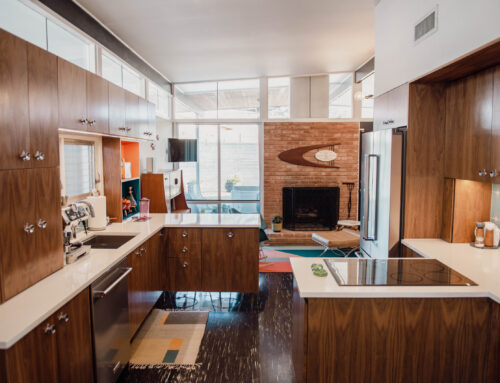Men of a certain age, regardless of race, creed, color, sexual preference or socioeconomic status, share a certain, specific and almost wistful memory. Once a week during their youth, their mother gave them a couple of bucks, and they went to the barbershop for a haircut.
Much has been made of this by media types, cultural experts, and people who look important when they appear on TV. They throw around phrases like American icon, window to another era, and similar-sounding social babble. Some have even heralded the return of the barbershop, tied to the current fascination with retro (whatever that is) that shows up in all the New York magazines.
And all of which misses the point about barbershops.
Men who remember going to the barbershop remember it because they didn’t want to go. Hated going. It was boring. It was scratchy. It took forever – and it took time away from doing something important, be it riding bikes or playing ball or beating up your brother.
“I can’t tell you how many times I went to the barbershop with my brother and my dad,” says Alan Clarke, a longtime neighborhood resident, who frequented the since-vanished Avery’s Barbershop in Casa Linda in his youth and today patronizes the A and A Barbershop at the other side of the shopping center.
“As a kid, I remember Dad would never let me get a flat top – too expensive – and while he never said it, he probably feared it would turn me into a hoodlum. And the only advantage to the cut was the Double Bubble gum on the way out.”
Those sorts of memories help explain why barbershops are still with us, despite constant predictions of their imminent demise since the late 1960s, when men started to let their hair grow and thousands of barbershops did close. Men still talk about the now closed and much-lamented Northlake Barbershop.
But many barbershops didn’t close, and for good reason. They are functional. They are efficient. They are practical. If someone has to do something they don’t want to do – and most men dislike getting a haircut today as much as they did when they were 7 – why not get it over and done with as quickly as possible?
“Barbershops are coming back again, man,” says Larry Pruitt, who owns the Crop Shop near the Knights of Columbus Hall off Northwest Highway and Ferndale.
“Men remember their dads taking them, and they want to take their kids. And these shorter haircuts we’re doing, the old clipper haircuts, you need a bona fide barber to do that.”
He may have a point. Much has changed in Lake Highlands – one look around the Crop Shop’s almost empty strip center makes that point – but barbershops remain. There is not only the Crop Shop, but almost half a dozen more: places such as the Lake Highland Barbers at Kingsley and Audelia and White Rock North on Northwest Highway across the street from Northlake. That the Crop Shop has been around since 1972 speaks volumes about the demand for that clipper haircut.
It also speaks of neighborhood, which is something the pop culture gurus either overlook or don’t understand. When they do mention it, they talk about bonding and being connected, which might sound good on Oprah but talks around the point. On some level, visiting one of those three every couple of weeks might be the stuff of a doctoral dissertation, but it overlooks something more basic. It’s possible to have a neighborhood without a barbershop, but if you do have a barbershop, there’s no doubt that you’re in a neighborhood.
It’s no coincidence we publish magazines in three Dallas neighborhoods, and that each neighborhood includes barbershops of almost-legendary status. On the other hand, there will almost certainly never be a barbershop in some place such as the West Village, the developer-generated urban something or other at Lemmon and Central, which means that no matter how hip and trendy it becomes, it will almost certainly never become a neighborhood.
In fact, it’s places such as the West Village that pose the newest threat to the continued existence of the barbershop. Real estate prices have increased in urban neighborhoods significantly in the past decade, which has put the squeeze on barbershops. When Northlake Center was redeveloped, there wasn’t any room left for the barbershop.
This is a loss that anyone who lives in Lake Highlands can appreciate. It’s spooky, in a way, to walk past one of the shops on a Saturday morning or after school during the week, and to see kids waiting to get their hair cut, often with parent in tow, as if it was 1972 and not 2002.
One of the funny things about memory is how it comes in waves. One minute, you’re in the present, and the next you’re remembering long-forgotten things that happened 30 years ago. Barbershops have that effect on anyone who ever sat in one, clutching a couple of dollar bills and bouncing impatiently while waiting for the barber to motion to them.
I haven’t been to Bart’s Barbershop in the town I grew up in for more than 25 years, and the shop has been gone for more than a decade, but I remember where it was, and I remember what the shop looked like and what Bart looked like and what we used to talk about. Will anyone be able to say that about places such as the West Village in 25 years?
It’s something to ponder the next time I’m waiting for the barber to point to me.





